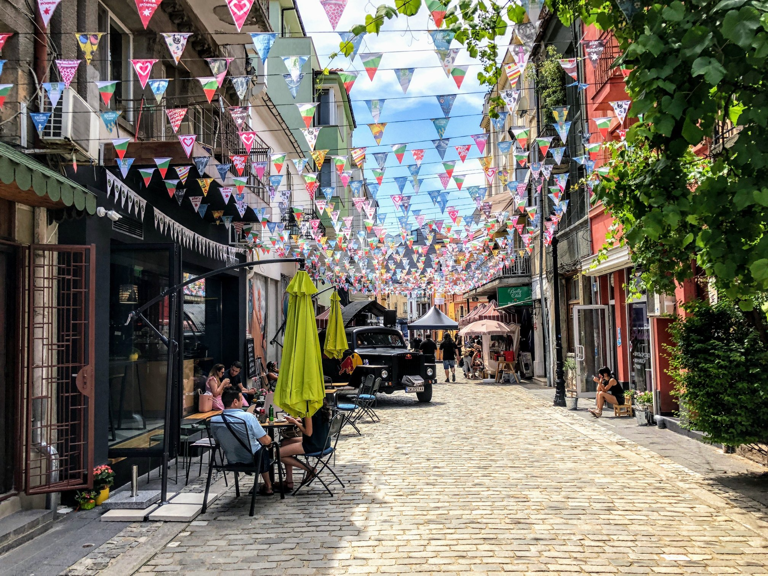The new normal: Staying away from your comfort zone
As we mark a year since the world was flipped on its head, we’re taking a look at how the pandemic has changed our working behaviour, the areas of digital that have seen the biggest changes, and what we can all learn from staying away from our comfort zone.

Image source: The Institute of You
It’s been a year of adapting, innovating, and in some cases, having to instruct fundamental business change just to survive. For a lot of businesses and industries, the pandemic wasn’t necessarily the cause of change, but it was the reason for accelerated change. Move, adapt and change quickly, or we’ll suffer in the long run.
Organisations quickly removed themselves from their comfort zones. Companies that couldn’t, or wouldn’t, make remote working feasible were suddenly run by an entirely remote workforce, overnight. Retailers and food outlets that weren’t able to deliver to customers in their homes had to rapidly spin up the infrastructure to do exactly that. Many businesses were not prepared for this acceleration in change. But those that were, thrived.
The idea of forced change may seem unnerving, but it many ways, it’s seen many organisations thrive. And as we begin to roll out vaccines, with a glimmer of normality on the horizon, you’d be forgiven for the sense of relief you might feel on both a personal and professional level. But if we’ve learned anything, now is not the time to take your foot off the accelerator. Instead, this is the moment to stay away from your comfort zone and continue to adapt and change.
To inspire us, and to learn what your organisation can look towards for sustained growth we have showcased some areas of digital and the businesses who chose to pivot their brands to capitalise. Business continuity in the face of external threats means imagining and delivering a future in which your business thrives. So, let’s take a look at the areas your business should be capitalising on in 2021.
How relevant is your brand in today’s responsible and sustainable world?

When H&M stores shut during lockdown, they quickly repurposed their supply chain to start producing PPE; masks, gowns and gloves. A highly compassionate and responsible move, but with an increasing focus on fast fashion and its devastating environmental impact, what more could a brand like H&M do to ensure their brand evolves in sustainability?
Let’s just take look at the shift towards “ReCommerce” and sustainability in retail. There are brands solely embracing this, such as Thrift and ThredUp. But why haven’t we seen any of the big brand retailers jumping on this? H&M, like many others, have ‘dabbled’ in this space (in-store clothes recycling) but there is a huge opportunity for any one of the major clothes brands to champion the way.
In addition to the unprecedented changes in consumer behaviour, we’re also witnessing wider political and cultural changes, which are reaching and impacting every industry sector and business. The question here is how relevant is your brand in today’s world? Does your brand have a purpose that speaks to today’s society?
Despite having built an audience and customer base in embracing black culture, Adidas came under intense scrutiny. The brand was accused, by its own employees, of its very public anti-discrimination stance not matching its actions internally. After a stream of protests and strikes, Adidas are now in the position of bringing about real, significant change inside. But this has been seen as a reactive response to the situation they found themselves in - and has really damaged their attempts to publicly align their brand to purpose.
For many businesses, the monumental brand shift that happened in 2020 shouldn’t be a mere memory, but a way of moving forward. And whatever the change that arises in the future, brands must remember that change starts from within.
Providing a next-level eCommerce experience

2020 was a record year for the eCommerce industry, with a total market growth of +22% according to WPP’s State of eCommerce report. And according to McKinsey, a whopping 75% of consumers changed shopping behaviours and switched to new brands during the pandemic.
Looking to the future, it’s not going to be the brands of old - with the biggest high-street presence - that will continue to dominate the online marketplace. And it’s therefore not going to be enough to provide a standard eCommerce experience and expect consumers to come flocking. Brands have to look at how they can innovate this space.
Firstly, we are seeing an increasing move from traditional single brand eCommerce stores to ‘marketplaces’. This follows a very successfully business model introduced by the likes of ASOS and Boohoo which have been building up brand stables. But now with Marks & Spencer’s joining the likes of Next and John Lewis in creating marketplaces, this starts to rapidly challenge what the future of eCommerce could look like.
This enables “new to market” or small brands to use these marketplaces to reach an already established customer base capitalising on the marketing investment from the parent brands. But this comes at a cost, and this cost is the lack of data ownership. Ultimately the owner of the marketplace is likely to be in control of one of your most valuable assets - your customer data and so these brands will need to look at how to overcome this.
Innovative and considered Social Commerce
In 2021 we expect to see the uplift in social media usage continue – but what can brands do to innovate in this space? eCommerce businesses are able to continue to push the use of customer data further to ‘hyper-personalise’ a buyer’s journey. For example, your smart watch knows when you work out, and geo location can pinpoint you when you’re at the vets – all invaluable data.
But balance this with a shift towards consumers having heightened awareness and a real scepticism towards how platforms and companies are using their data. Documentaries such as The Social Dilemma serve as a stark reminder of our attitudes towards data. Brands need to balance the opportunities in data with the rise of data awareness. Brands that don’t get this balancing act right risk alienating their customer base completely.
Exceptional offline experiences

The UK High Street was under considerable pressure before the COVID-19 pandemic hit. Repeated lockdowns brought mass store closures across the board. 2020 saw the loss of Bonmarche, Arcadia Group, Edinburgh Woollen Mill, Peacocks and Jaeger - all part of the EWG Group. [Source: Business Live]
Even those who have been seemingly more resilient to high street change, Carphone Warehouse for example, are exiting their offline experience. So, what does the future hold for the high street? Well, what we have seen is the entrepreneurial spirit of small retailers – particularly in food and drink and the businesses that were quick to adapt were the ones to survive.
As people inevitably return to the high street, retailers shouldn’t rest on their laurels. Let’s keep an eye on Primark here, who have still refused to embrace digital in any form – despite a projected loss of £1 billion last year.
The move to online ‘marketplaces’ should be embraced in the offline world. Sharing the asset of leases and staff costs to fulfil orders and drive footfall could make the difference between survival and failure.
Retailers also need to look at value adding to their offline experience - create a seamless digital and instore customer journey. There’s increasingly more discussion around what a “high street of experiences” could look like. This isn’t a new concept brought about because of the pandemic – it’s been accelerated because of the pandemic. Brands that had already adopted the experiential experience in store, such as Lush or Pets at Home with their instore veterinary practices, will likely retain their offline presence.
Staying out of your comfort zone – what we can all learn
We can’t trivialise the seriousness of the consequences that many people will face as a result of the pandemic. But just as we have seen brands and businesses adapt, change and step out their comfort zone, now is the time for you and your business to follow suit.
COVID-19 may have taken you from a place that was safe and secure, and forced you to confront a world that is ambiguous, unfamiliar, unpredictable, uncomfortable and uncontrollable. But as we head back to a post pandemic ‘normal’ - don’t make the mistake of falling back into old habits. Afterall, feeling uncomfortable is the key to success.
And finally, learn to embrace and adapt to failure. Being fired from his first job because “he lacked imagination and had no good ideas” didn’t stop Walt Disney.

